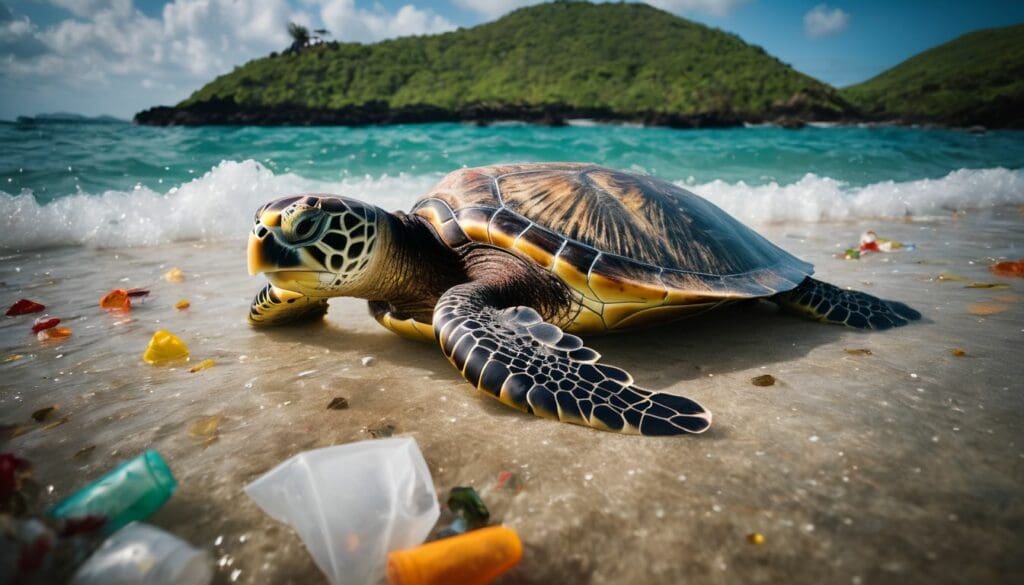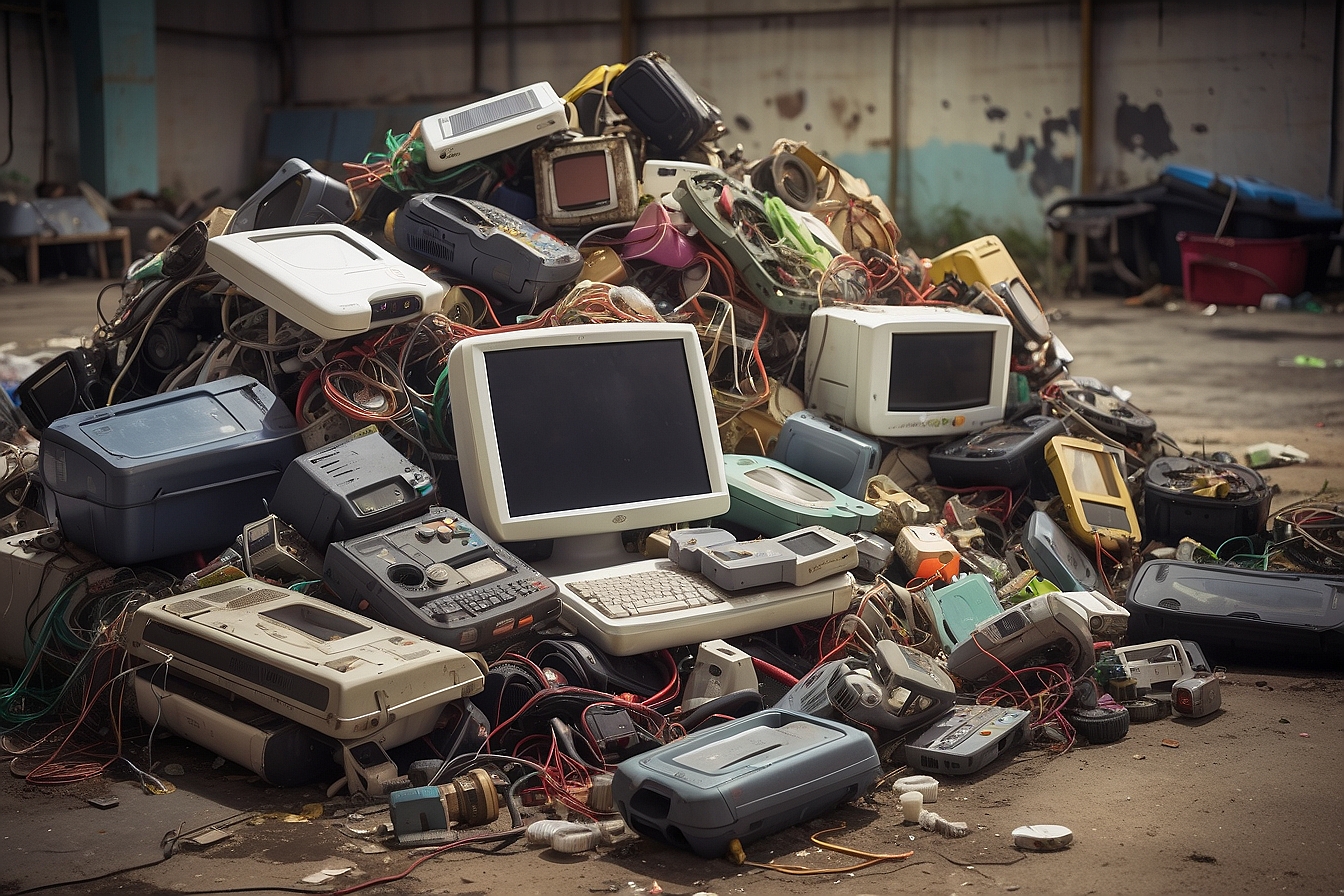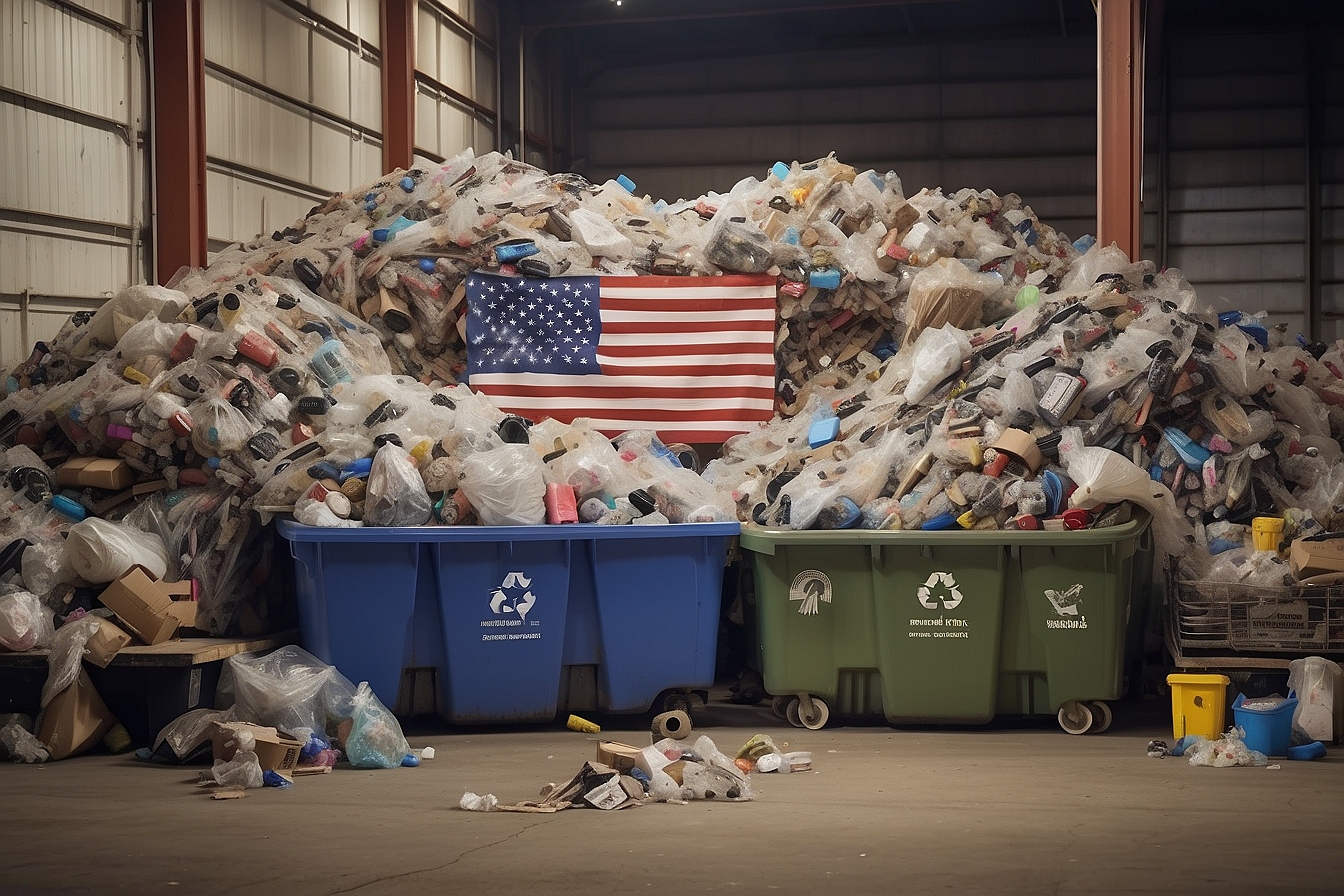We’ve all heard the murmurs of seemingly endless carpets of refuse adorning our oceans, yet truly comprehending their scope is rather like trying to fathom the depths of the sea itself.
It’s a concern that touches each of us deeply; it certainly tugs at our own heartstrings, and we couldn’t help but share a particularly jarring piece of information with you – there’s an estimated 80,000 tonnes of plastic contaminating just one single patch.
Our thorough investigation will lay bare the staggering extent of these ocean garbage patches and their harrowing impact not only on our precious marine companions but also on human life.
Let us guide you through this murky issue towards a brighter understanding.
Key Takeaways
- The Great Pacific Garbage Patch contains roughly 80,000 tonnes of plastic and spans over 1.6 million square kilometers.
- Over 1.8 trillion pieces of plastic make up this patch, including everything from large fishing nets to microplastics that threaten marine life.
- Plastics in these garbage patches can sink to different depths, causing harm not just at the surface but throughout the ocean’s water column.
- Types of plastics polluting the oceans include PET bottles, HDPE containers, and polystyrene materials; all contribute to breaking down into harmful microplastics.
- The Ocean Cleanup uses high – tech methods like aerial reconnaissance and satellite imagery to measure and combat this environmental challenge.
The Great Pacific Garbage Patch: Size and Location
The Great Pacific Garbage Patch is a massive accumulation of plastic debris located in the North Pacific Ocean. The estimation of plastic accumulation, total mass and count, vertical distribution, and types of plastic found are all key factors in understanding the scale of this ocean pollution issue.
Estimation of plastic accumulation
We face a staggering challenge in estimating plastic accumulation within ocean garbage patches. Methods rely on sample collection, satellite imagery and computer modelling to piece together the vast puzzle of marine debris.
Our oceans now hold millions of tonnes of trash, with plastic waste dominating this unwelcome collection.
Scientists use advanced techniques to approximate how much microplastics and larger items are floating out there. We must understand that each tiny fragment poses a threat to marine ecosystems and ultimately affects ocean conservation efforts.
Surveys reveal alarming figures: over 1.8 trillion pieces swirling in just the Great Pacific Garbage Patch alone, indicating a severe environmental impact we cannot ignore.
Total mass and count
Our knowledge of the ocean garbage patches has been growing, and we’re now able to estimate the total mass and count of plastics polluting these vast areas. We’re witnessing an accumulation of debris primarily composed of plastic, ranging from large containers to microplastics barely visible to the naked eye.
Here’s a snapshot of what we’ve discovered about the sheer scale of these patches:
| Total Mass (approx.) | 80,000 tonnes |
|---|---|
| Number of Pieces (approx.) | 1.8 trillion pieces |
| Largest Items | Fishing nets, large plastic containers |
| Most Common Microplastics | Broken down fragments of consumer goods |
| Surface Area Covered (approx.) | 1.6 million square kilometers |
As guardians of the environment, we must understand these numbers represent a significant threat to our oceans’ health. Our actions have led to this situation, and it’s up to us to work towards solutions.
Vertical distribution
Moving on from analysing the total mass and count of plastic debris in the Great Pacific Garbage Patch, we now turn our attention to the vertical distribution of this marine litter.
Understanding how plastic is distributed through various depths of the ocean provides crucial insights into its impact on marine life and ecosystems. This distribution reveals that plastic waste doesn’t just float near the surface but can penetrate deep into the water column, affecting a wider range of marine organisms and habitats.
Monitoring the vertical distribution of plastic pollution remains essential for devising effective clean-up strategies and mitigating its environmental degradation. The knowledge gained from studying these patterns aids in developing targeted approaches to remove debris from not only surface waters but also lower depths, thus working towards a more comprehensive solution to this pervasive issue.
Types of plastic
Plastic pollution in ocean garbage patches consists mainly of polyethylene terephthalate (PET) bottles, high-density polyethylene (HDPE) containers, and polystyrene packaging materials. Additionally, there is a significant presence of polyvinyl chloride (PVC) products, low-density polyethylene (LDPE) plastic bags, and polypropylene ropes and nets. These plastics pose a threat to marine life as they break down into microplastics, contributing to the contamination of the marine ecosystem. Furthermore, they are challenging to clean up due to their diverse sources and compositions.
Impact on the Environment and Research Methodology
The Great Pacific Garbage Patch has significant negative effects on marine life and ecosystems, as well as potential impacts on human health and society. To learn more about the scale of these impacts and the research methods used by The Ocean Cleanup, continue reading in our upcoming blog post.
Effects on marine life
Marine life suffers greatly from ocean garbage patches. Creatures such as sea turtles, seabirds, and marine mammals often mistake plastic debris for food. This can lead to ingestion of toxic materials and cause internal injuries or blockages in their digestive systems.
Additionally, the entanglement of animals in plastic waste can result in severe injury or even death. The devastating impact of ocean garbage patches on marine life calls for urgent action to prevent further harm.
These harmful effects prompt us to consider the urgency of cleaning up our oceans. Understanding the far-reaching consequences is crucial for motivating actions towards conservation efforts and supporting initiatives like the Ocean Cleanup.
Effects on humans and society
The significant amount of plastic waste in ocean garbage patches has noticeable effects on human lives and society. From coastal communities to global supply chains, the implications are far-reaching.
Plastic pollution can harm human health through contaminated seafood consumption and exposure to toxic chemicals. On a larger scale, it also impacts tourism, fishing industries, and economies reliant on marine resources.
Society bears the burden of cleaning up shorelines and managing waste disposal while simultaneously facing challenges as consumer demand drives plastic production.
Moreover, plastic pollution affects vulnerable communities disproportionately, exacerbating social inequalities. As environmentally conscious individuals supporting conservation and environmental efforts, we must advocate for sustainable solutions that prioritise human well-being alongside nature’s preservation.
The Ocean Cleanup’s research methods
- Utilising aerial reconnaissance to survey and map the extent of floating debris.
- Employing satellite imagery to track the movement and accumulation of trash gyres.
- Conducting extensive sea pollution sampling and analysis to assess the types and quantities of plastic present in the ocean.
- Collaborating with scientists and researchers to study the impact of these rubbish patches on marine life, ecosystems, and human society.
- Developing and testing large – scale cleanup systems designed to remove vast amounts of floating debris from the oceans, contributing towards a cleaner environment for all.
Conclusion
Understanding the scale of ocean garbage patches is crucial for environmental conservation. The Great Pacific Garbage Patch‘s vast size and significant plastic accumulation highlight the urgent need for action.
Research into the impact on marine life and society underscores the importance of addressing this global issue. Together, we can work towards solutions that will make a difference for our oceans and future generations.
FAQs
1. What are Ocean Garbage Patches?
Ocean Garbage Patches are large areas in the ocean where massive amounts of waste and debris have accumulated, often due to currents bringing the rubbish together.
2. How many garbage patches exist in our oceans?
Scientists recognise several garbage patches across different oceans, with the Great Pacific Garbage Patch being the most well-known due to its immense size.
3. Why should we be concerned about these patches?
These patches pose significant problems for marine life, entangling creatures and introducing toxic substances into their environment, which we must address urgently.
4. Can we clean up these Ocean Garbage Patches?
Yes, there are ongoing efforts to clean them up; however, it’s a complex task considering their scale and requires global cooperation plus sustained effort to minimise further pollution.





